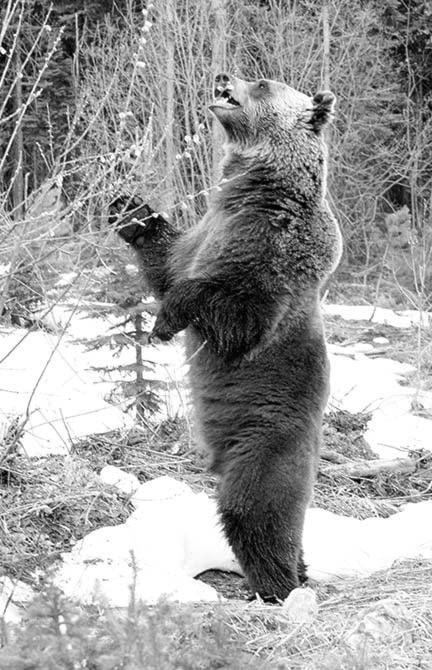CAROLYN GRANT
As reported in the Bulletin/Townsman in December, the provincial government is proposing that a limited entry hunt for grizzly bears could be reopened in Management Units 4-20 (the St. Mary Valley and north to Skookumchuck), and 4-23 (in the Elk Valley) to allow the harvest of five grizzlies each year for three years.
This target could be altered if more grizzlies are killed than the target, either through hunting or rail and road kills.
Townsman reporter Sally MacDonald spoke to local wildlife ecologist Bob Jamieson, who said that grizzly numbers are healthy in these areas.
According to Jamieson's report, there are now more than 900 grizzlies in the East Kootenay. In the Crown of the Continent region — in the Waterton and Flathead areas and northern Montana — there are an estimated 1,226 bears. In the Canadian Rockies there are an estimated 1,309 bears, and west of the Rocky Mountain Trench there are an estimated 1,767 bears, for a total of 4,302 bears.
"One of the pieces of the puzzle is that most people don't realize just how many bears we have now. Grizzly bears are certainly not a species at risk anymore. We have a very healthy population that is producing an excess of bears that are moving into human occupied areas," Jamieson told the Townsman.
Jamieson supports the province's proposal to reopen the grizzly bear hunt around Kimberley and in the Elk Valley to manage this population growth.
However, a local wildlife biologist, Dave Quinn, disagrees.
He says Jamieson makes some interesting points in his grizzly thesis, but perhaps simplifies grizzly conservation issues.
"As a biologist I have worked on grizzly studies and conservation efforts for over a decade, and have learned that there are rarely simple conclusions to be made regarding wildlife population changes," Quinn said. "While I wholeheartedly agree that grizzly sightings in the trench are way up, I am not sure that indicates that grizzly numbers are up.
"We know from collar data that grizzlies do come down into the trench on their wanderings on a regular basis, but in the past they have passed through and returned to the mountains. So why are more bears using the trench more than in the past?"
Quinn believes one contributor may be the open season on cow elk.
"This hunt, combined with the new two-doe open season on whitetail, results in 400-plus elk and hundreds of deer gut piles (and who knows how many wounded elk and deer that die later) — all below 1,100 metres in the trench — right where grizzly sightings are on the rise. This is potentially a good reason for a grizzly to stick around longer in the lower elevations it may have avoided in the past."
In other words, it's not an increase in bear numbers but a change in bear behaviour.
Quinn also says that studies by noted experts such as Bruce MacLellan indicate that grizzly densities in the Flathead are declining, not rising.
"Does this mean that population dispersal is taking place, and we should begin to hunt them? Or does this mean that the habitat is changing? We need to ask experts like Dr. Maclellan and Dr. Micheal Proctor for insight into this, and not respond to more grizzly sightings with a 'from the hip' approach of increased hunting," Quinn said.
Local conservation group Wildsight concurs.
Executive Director John Bergenske said in a statement that while it is true that grizzly bear numbers are recovering in this region, it is a simplistic misrepresentation to suggest that recovery is complete and that a hunt is necessary to avoid grizzly encounters with humans.
"Population numbers can easily give the false impression of an overabundance of bears roaming the region. While approximately 900 grizzly bears do inhabit the Purcells and Rockies between the US border and Golden, these are sometimes broken into small isolated populations—particularly in the southern Purcells. Isolated populations are threatened with extinction. Fragmentation of populations remains a significant issue and there remains a dire need to create and maintain connectivity corridors with adjoining bear populations.
"Hunting will not make people safer. There is no evidence to suggest that opening the hunt will address problem bears wandering near human habitation. We all need to become bear smart and take action on how we influence wildlife behaviour," Bergenske said.
